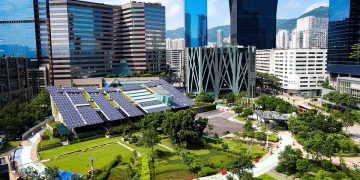Living a sustainable lifestyle is becoming increasingly important in our modern world. With climate change and environmental degradation becoming more pressing issues, it is crucial that we all do our part to reduce our impact on the planet. Fortunately, there are many simple and easy ways to incorporate eco-friendly practices into our daily lives. In this article, we will explore some tips for easy eco-living that anyone can implement.
Reduce, Reuse, Recycle
One of the simplest ways to live a more sustainable lifestyle is to follow the mantra of “reduce, reuse, recycle.” By reducing the amount of waste we produce, reusing items whenever possible, and recycling materials that can be processed into new products, we can greatly reduce our environmental footprint.
Reducing waste can be as simple as using reusable bags when shopping, buying products with minimal packaging, and avoiding single-use items like plastic water bottles and straws. Reusing items like containers, clothing, and furniture can help to extend their lifespan and reduce the need for new products. Recycling materials like paper, glass, and plastic can help to conserve resources and reduce the amount of waste that ends up in landfills.
Conserve Energy
Another important aspect of eco-living is conserving energy. By reducing our energy consumption, we can help to lower our carbon footprint and decrease our impact on the environment. There are many simple ways to conserve energy in our daily lives, such as turning off lights when not in use, unplugging electronics when they are not being used, and using energy-efficient appliances and light bulbs.
Additionally, using natural light and ventilation whenever possible can help to reduce the need for artificial lighting and heating or cooling. In the winter, wearing extra layers of clothing and using blankets can help to keep you warm without needing to turn up the heat. In the summer, using fans instead of air conditioning and closing blinds during the hottest part of the day can help to keep your home cool without using as much energy.
Choose Sustainable Products
When shopping for products, it is important to consider their environmental impact. Choosing products that are made from sustainable materials, produced ethically, and packaged in eco-friendly materials can help to reduce your impact on the environment. Look for products that are certified organic, Fair Trade, or made from recycled materials.
When it comes to food, buying locally grown produce and supporting local farmers can help to reduce the carbon emissions associated with transporting food long distances. Choosing plant-based foods over animal products can also help to reduce your carbon footprint, as meat and dairy production are major contributors to greenhouse gas emissions.
Grow Your Own Food
One of the best ways to reduce your environmental impact and live a more sustainable lifestyle is to grow your own food. By growing your own fruits, vegetables, and herbs, you can reduce the carbon emissions associated with transporting food from farm to table, reduce the amount of packaging waste produced, and ensure that your food is free from harmful pesticides and chemicals.
Even if you don’t have a large backyard or garden, you can still grow your own food in containers on a balcony or windowsill. Herbs like basil, mint, and parsley are easy to grow in small pots, as are vegetables like tomatoes, peppers, and lettuce. You can also join a community garden or participate in a local farm share program to support sustainable agriculture and have access to fresh, locally grown produce.
Reduce Water Usage
Conserving water is another important aspect of living a sustainable lifestyle. By reducing our water usage, we can help to conserve this precious resource and reduce the energy required to treat and transport water. There are many simple ways to reduce water usage in our daily lives, such as fixing leaky faucets, taking shorter showers, and using a dishwasher only when it is full.
You can also install water-saving devices like low-flow showerheads and faucets, dual-flush toilets, and rain barrels to collect rainwater for watering plants and gardens. By being mindful of how much water we use and finding ways to reduce our usage, we can help to ensure that this vital resource is available for future generations.
Support Sustainable Transportation
Another important aspect of eco-living is supporting sustainable transportation options. By reducing our reliance on cars and choosing alternative modes of transportation like walking, biking, carpooling, and public transit, we can help to reduce our carbon emissions and decrease air pollution. In addition to reducing our environmental impact, choosing sustainable transportation options can also help to improve our physical health and reduce traffic congestion.
If you do need to drive, consider carpooling with coworkers or friends, using a car-sharing service, or driving a fuel-efficient or electric vehicle. You can also reduce your carbon footprint by combining errands into one trip, keeping your car well-maintained, and driving at a steady speed to maximize fuel efficiency. By making small changes to how we travel, we can help to create a more sustainable and environmentally friendly transportation system.
Get Involved in Your Community
One of the best ways to live a sustainable lifestyle is to get involved in your community and support local initiatives that promote eco-friendly practices. By participating in local clean-up events, volunteering at a community garden, or attending educational workshops on sustainability, you can help to raise awareness about environmental issues and inspire others to take action.
You can also support local businesses that prioritize sustainability and environmental stewardship, such as farmers markets, zero-waste stores, and eco-friendly cafes. By supporting businesses that are committed to reducing their environmental impact, you can help to create a more sustainable economy and encourage others to do the same.
Conclusion
Living a sustainable lifestyle does not have to be difficult or complicated. By following these simple tips for easy eco-living, you can reduce your environmental footprint, conserve resources, and help to create a more sustainable world for future generations. Whether you choose to reduce, reuse, and recycle, conserve energy, choose sustainable products, grow your own food, reduce water usage, support sustainable transportation, or get involved in your community, every small step you take can make a difference. Together, we can all work towards a greener, healthier, and more sustainable future.





